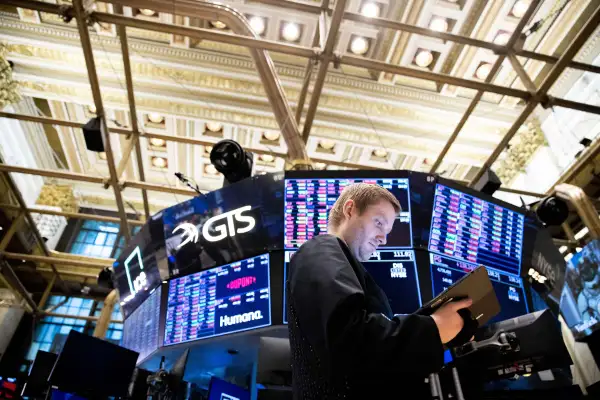Stocks Just Had Their Worst Day Since 2020. What's Next?
Money is not a client of any investment adviser featured on this page. The information provided on this page is for educational purposes only and is not intended as investment advice. Money does not offer advisory services.

Stocks just suffered their worst day since 2020 following a higher-than-expected inflation report. If you checked your investment portfolio, you're likely nervous — and wondering what's next for stocks and what you can do about it.
The stock market experienced a bit of a meltdown on Tuesday with the S&P 500 ending the day down 4.3%, the Dow Jones Industrial Average down 3.9% and the Nasdaq Composite down 5.2%. Stocks were up slightly mid-day Wednesday.
This year has been a volatile one for stocks. Though the S&P 500 started the year at a record high, it plummeted into a bear market in June. A summer rally may have provided investors some relief — but stocks fell once again in August.
While investors have been hoping that the Federal Reserve may be able to slow and/or decrease the size of rate hikes, Tuesday's report was a sign that inflation pressures remain.
"Yesterday was kind of a resetting of expectations," says Matt Dmytryszyn, chief investment officer of Telemus, a wealth advisory firm.
Here's what investors need to know.
Why stocks fell this week
Consumer prices rose 8.3% year-over-year in August, according to data released Tuesday from the Bureau of Labor Statistics. While that's a slight improvement from July’s 8.5% annual inflation rate, it's still higher than many experts had expected and a very elevated level historically.
As you've likely experienced at the grocery store, gas pump and elsewhere, prices have been sky high most of the year. When inflation is high, the Federal Reserve tends to hike interest rates in an attempt to cool the economy and bring those prices down. But rate hikes also tend to bring down the prices of some financial assets, like stocks.
The central bank has already implemented four rate hikes this year. The last two hikes were three-quarters of a percentage point, which is considered quite large.
Tuesday's inflation data appeared to spook investors because it means the Fed may not be able to slow or lower rate hikes as much as investors were hoping. All eyes will be on the Fed on Sept. 20 to 21, when it meets again to determine the next move.
What to expect next from the stock market
Investors can expect more volatility in the months to come, Dmytryszyn says. He adds that it seems pretty likely we'll see a rate hike of at least three-quarters of a percentage point again in September.
"There is not a lot of reason to get overly bullish on equities right now for the short term," Dmytryszyn says. There could be pressure on company's earnings and challenges in Europe's markets tied to the energy crisis could become more visible as we get closer to the winter heating season, he notes.
Inflation will remain the focus point — and while the pathway for inflation remains unclear, Will Rhind, founder and CEO of GraniteShares, a provider of exchange-traded funds (ETFs), agrees that investors should expect more ups and downs.
Once the market sees inflation going down, investors are going to get more stability, he adds. (Rhind thinks inflation is already coming down, and that markets overreacted to Tuesday's inflation report.)
What investors should do now
While the short term may be volatile for stocks, "we're pretty excited about the long-term opportunity set in equities," Dmytryszyn says.
And focusing on the long term is generally the right move. Financial advisors recommend setting up an investing strategy that aligns with your goals, timeline and risk tolerance, then sticking to it.
If you've been meaning to add to your portfolio, which should be a diversified mix of assets, like stocks and bonds, now may an ideal time.
"The market is still down versus where it was at the end of last year and for those who can take a longer-term perspective, it might prove to be a good entry point," Rhind says.
Investors shouldn't try to time the market but instead invest on a consistent basis — a strategy called dollar-cost averaging, he adds. (Think $100 every month, for example).
It's also not a bad time to "have a little extra cash as dry powder" because you're earning a fairly reasonable yield on it, Dmytryszyn says.
That could mean keeping some cash in a high-yields savings account until you're ready to invest. One upside to the Federal Reserve interest rate hikes is that online banks like Ally and Marcus have been raising the annual percentage yield, or APY, on their high-yield savings accounts.
More from Money:
Inflation Update: Food, Rent, Electricity See Biggest Price Increases in Decades

